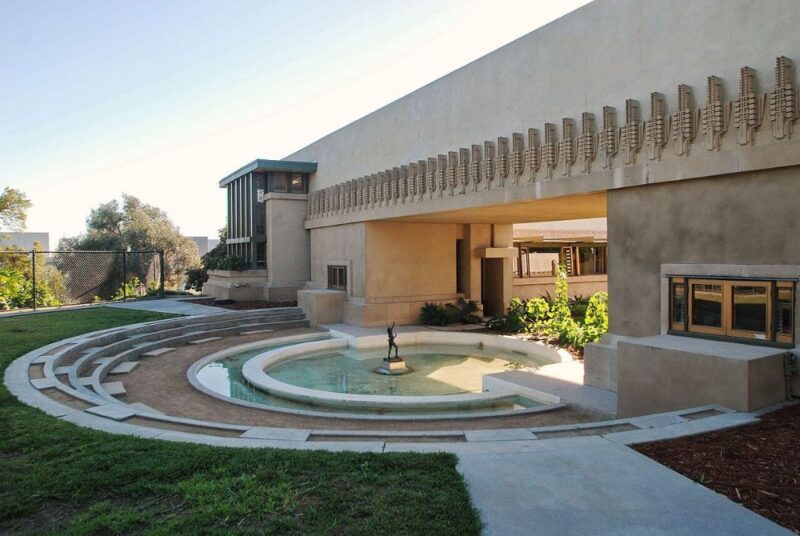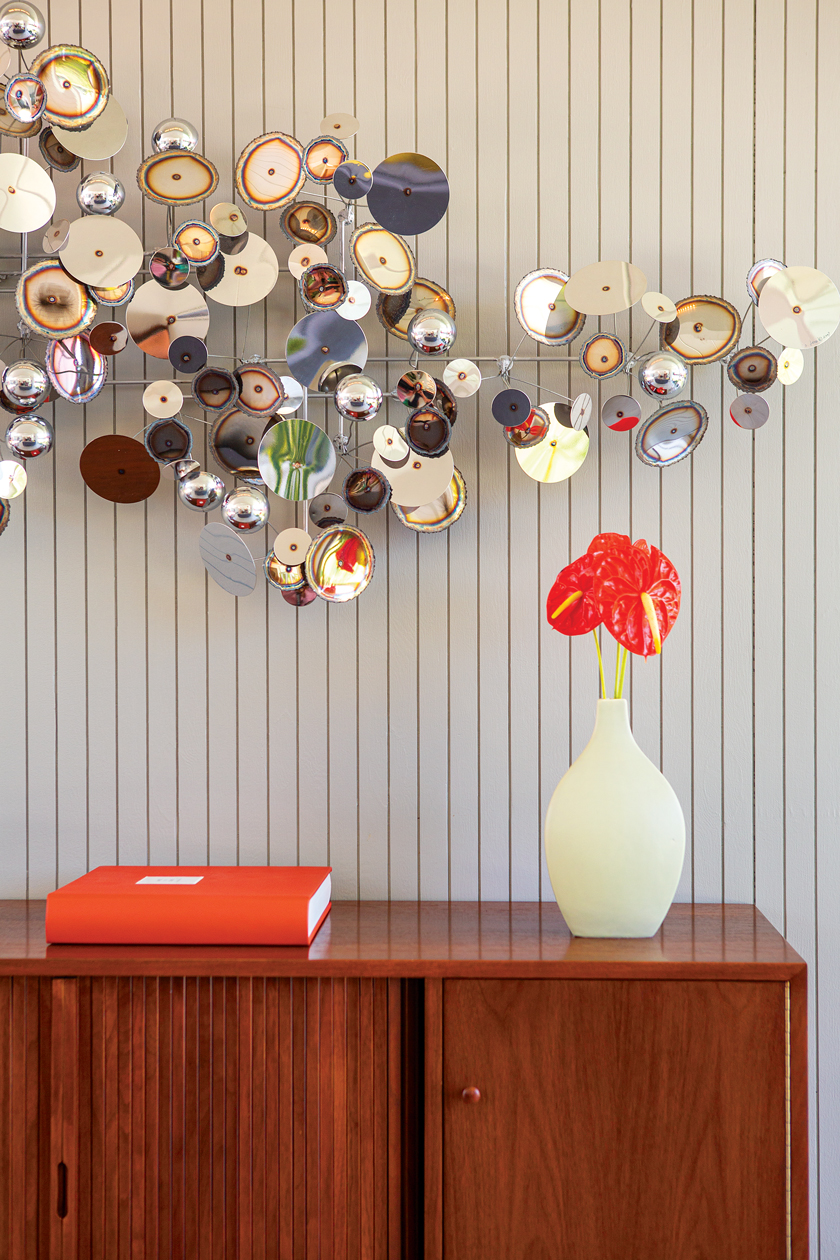If there is one American architect that most people can name, it is Frank Lloyd Wright. Much of Wright’s body of work precedes the Mid Century Modern period, but was foundational to its development and evolution.
Frank Lloyd Wright was born on June 8, 1867, and lived and worked until April 9, 1959. Over the course of his career, he designed over a thousand residential, commercial and public buildings. (See his final design here.)
As a child growing up in Wisconsin, Wright played with a set of blocks known as “Froebel Gifts,” which his mother Anna bought him. While he studied civil engineering as a 19-year-old at the University of Wisconsin-Madison, he never graduated. Instead, that same year, he started working with Joseph Lyman Silsbee’s architectural firm, which was based in Chicago.

Over the decades of his career, Wright became famous not only for his structures, but for his personality. He developed a reputation for arrogance, which he embraced. He once declared, “Early in my career…I had to choose between an honest arrogance and a hypercritical humility… I deliberately choose an honest arrogance, and I’ve never been sorry.”
If one was going to work with Wright, one needed to know going into the project that he was going to insist on controlling every aspect, even down to furnishings and décor. There is a lot to say about Wright’s intense personality, but our focus in this overview will be on his works.
Frank Lloyd Wright’s Philosophy of Organic Architecture
You may be familiar with architect Louis Sullivan’s declaration that “form follows function.” Sullivan only lived until 1924, but his statement later became a core attribute of Mid Century Modern and minimalist design.
Sullivan influenced Wright, but Wright went further, saying, “Form follows function—that has been misunderstood. Form and function should be one, joined in a spiritual union.”
Speaking of minimalism, Wright’s works were built on a foundation of simplicity. Wright said, “As we live and as we are, Simplicity – with a capital ‘S’ – is difficult to comprehend nowadays. We are no longer truly simple. We no longer live in simple terms or places. Life is a more complex struggle now. It is now valiant to be simple: a courageous thing to even want to be simple. It is a spiritual thing to comprehend what simplicity means.”
Wright called his style “organic architecture.” His goal was to design each building so that it fit as naturally as possible into its setting, incorporating compatible materials and forms.
Defining Features in Frank Lloyd Wright’s Buildings
The specific features in Wright’s buildings vary, and he had a few distinct subsets of styles, like prairie houses and Usonian houses. But here are some elements that tend to occur frequently in his structures:
- Open floor plans
- Large windows (including walls of windows)
- Strong horizontal lines
- Flat roof lines
- Mixed materials
- Art glass windows
- Overhanging eaves
- Decorative concrete blocks and tiles
- Warm, earthy colors (especially Cherokee Red)
You will notice that a lot of these elements typify Mid Century Modern design, but Wright was putting them to use well before the mid century period.
Famous Works by Frank Lloyd Wright

Robie House: The Frederick C. Robie House is one of Wright’s Chicago area houses. It typifies the Prairie School style with its flattened roof lines, large overhanging eaves, and strong horizontal lines.

Pope-Leighey House: This Virginia home was completed in 1941. As one of Wright’s Usonian houses, it was very affordable. In fact, this gorgeous house cost only $7,000 at the time, which is equivalent to a little more than $147,000 today.
Taliesin West: This desert house in Arizona is where Frank Lloyd Wright lived during winter. The distinctive, colorful stones of its façade are from the surrounding desert. The interior is wonderfully open and filled with natural light.

Storer House: This Mayan Revival-style home was constructed in 1923 for a homeopathic physician named Dr. John Storer. It later had to be restored by producer Joel Silver, who bought it in 1984 when it was rundown. Other homes in California by Wright feature similar design elements.
Fallingwater: This Pennsylvania home with its dramatic cantilevers is perhaps Wright’s most famous residential structure. Indeed, out of all of Wright’s buildings, it is one of the ones that most brilliantly showcases his philosophy of organic architecture.

Guggenheim Museum: The Solomon R. Guggenheim Museum in Manhattan was completed in 1959, making it an excellent example of Mid Century Modern design by Wright.
If you enjoyed this post, you also may also enjoy Frank Lloyd Wright’s Usonian Utopia. Did you know Frank Lloyd Wright’s son was also an architect? Read about The Other Frank Lloyd Wright. And of course, don’t forget to follow us on Instagram, Facebook and Pinterest for more Mid Century Modern inspiration!












